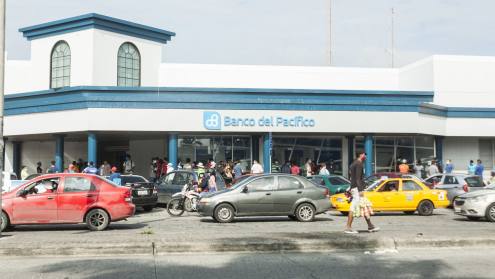What a difference a year makes. In March 2020, the first coronavirus cases started being reported, before snowballing in the US. Since then, like most, the country and its banks have had to deal with movement restrictions that sank the economy into recession — although economic activity now seems to be on the mend. In this scenario, profitability and asset quality were particularly hard to maintain. Yet, banks, generally, performed well.
In particular, Morgan Stanley’s growth in assets, loans, deposits and operating income were substantially higher than the other large US banks, according to The Banker’s latest performance ranking, which scores banks based on eight indicators. Only the 20 largest lenders headquartered in the US are included in the performance analysis.
Thanks to its growth, profitability and return-to-risk indicators, Morgan Stanley was the overall best-performing US bank last year. Its growth score was comfortably ahead of second-placed Goldman Sachs’s. It also did relatively well in terms of profitability and return-on-risk, where it scored second after PNC Financial in both cases. In turn, PNC Financial sits in second place in the overall performance ranking.
Discover Financial Services proved to be the most sound and efficient US bank. Based in Riverwoods, Illinois, Discover is a digital bank and the 29th largest by Tier 1 capital, when including foreign-owned subsidiaries in the list. By the end of 2020, the bank had an 11.52% capital-to-assets ratio — better than the 10.17% of the previous year. Its cost-to-income ratio, a measure of operational efficiency, was 40.21% — although this is worse than the previous 38.25%, the ratio is still comfortably below that of its peers. The second most efficient bank, Capital One Financial Corporation, closed 2020 with a cost-to-income ratio of 53.81%; and the third-best, Regions Financial Corporation, with 58.15%.
State Street tops the asset quality and liquidity tables. The former indicator is an amalgamation of several ratios: allowance for loan losses on gross total loans, non-performing loans and impairment charges to total operating income. It also considers their annual change. The latter indicator groups the loans-to-assets ratio and the loans-to-deposits ratio, as well as their annual changes.
Finally, Truist Bank, the lender born from the merger between SunTrust and BB&T at the end of 2019, has the best leverage score, with an 86.07% liabilities-to-assets ratio.
JPMorgan, the largest bank by Tier 1 capital and assets, is 10th in the overall performance ranking. Bank of America, the country’s second largest, ranks 17th in terms of performance. Citigroup, which is third by size, is 19th by performance. The US’s three largest banks have all become bigger both in terms of Tier 1 capital and assets over the past year. Canada’s TD Bank is the largest foreign-owned lender in the country; followed by Spain’s Santander and UK-based HSBC.
Looking at where the best-performing banks are located across the US, five are headquartered in New York, with the others scattered across different cities and states: Pittsburgh, Pennsylvania, for PNC Financial; Charlotte, North Carolina, for Truist Bank; McLean, Virginia, for Capital One; Boston, Massachusetts, for State Street; and Birmingham, Alabama, for Regions.













